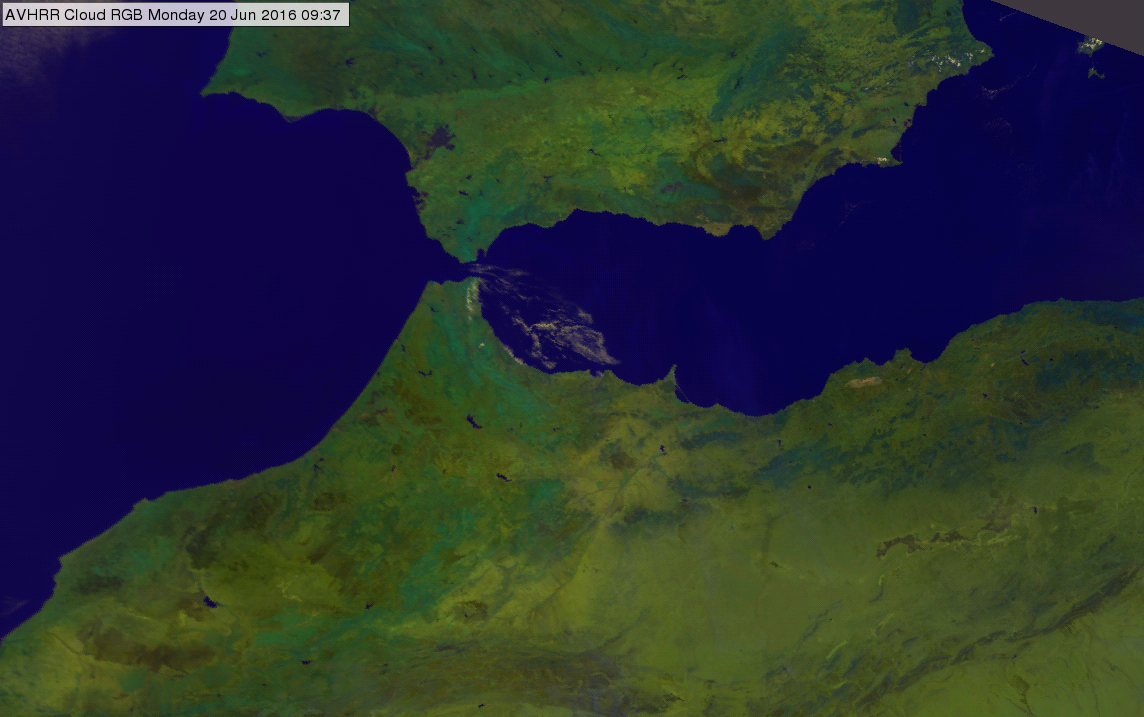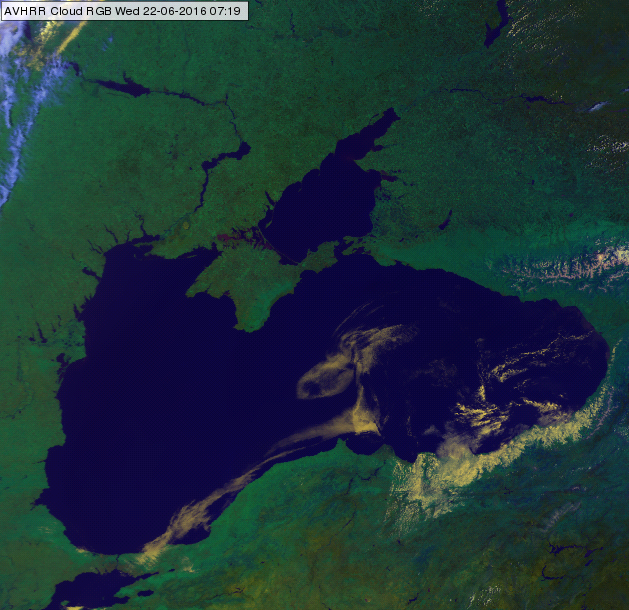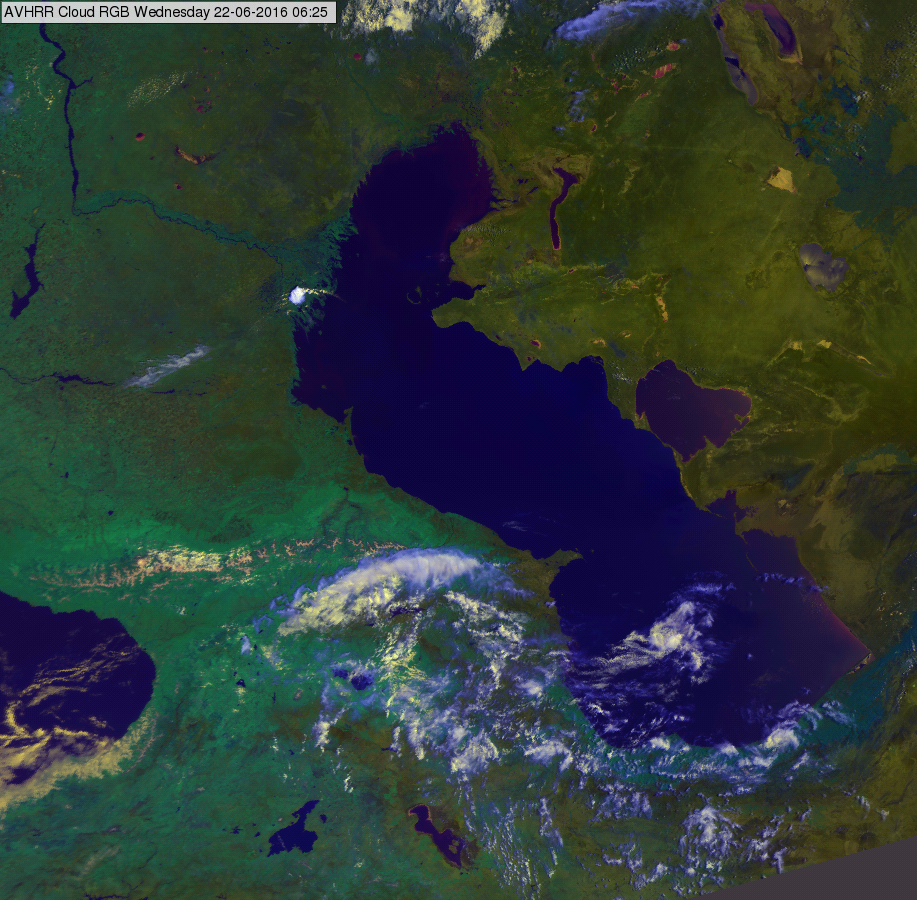Oceans and lakes
Open water surfaces appear dark blue in the AVHRR Cloud RGB images.

AVHRR Cloud RGB image of the Gibraltar region for 20 June 2016 at 09:37 UTC

AVHRR Cloud RGB image of the Black Sea and the Dnieper River for 22 June 2016 at 07:19 UTC
Note that:
• If the water is (partly) covered by cloud, fog, ice, snow on ice or vegetation, then its colour modifies.
• In case of sunglint the colour of the water turns yellowish, see example separately.
• In case the water is shallow and/or turbid, its colour may have some magenta tone. The example below shows the Caspian Sea. Close to its east coast the water has a slight magenta tone.

AVHRR Cloud RGB image of the Caspian Sea region for 22 June 2016 at 06:25 UTC
Explanation of the colours of open water surfaces (see the recipe):
• The water strongly absorbs the radiation around 0.87 micron, so its reflectivity is very low in this channel, thus the green component is almost zero.
• For deep, clear water bodies the VIS0.63 reflectivity is usually also very low thus the red component is also weak.
• As the temperature of the open water surfaces is positive, so the brightness temperature derived from IR10.8 is usually between 303 and 270 K, thus the blue component is lower than medium, but not as low as the green component.
As a consequence, open water surfaces appear dark blue. Colder water surfaces, and open water surfaces close to the edge of the swath (scanned with high satellite zenith angle) are slightly brighter blue, but still darker than medium blue.
For shallow and/or turbid water bodies the VIS0.63 reflectivity increases, the red component became higher than the green component. Such water bodies may appear dark blue with some magenta tones.

